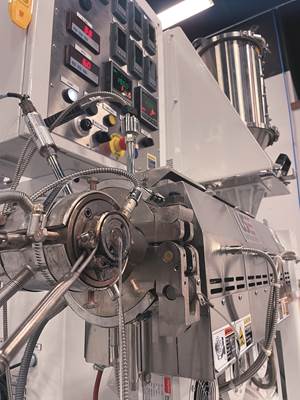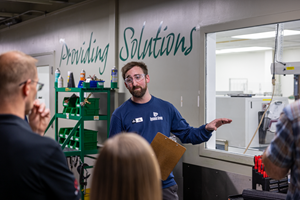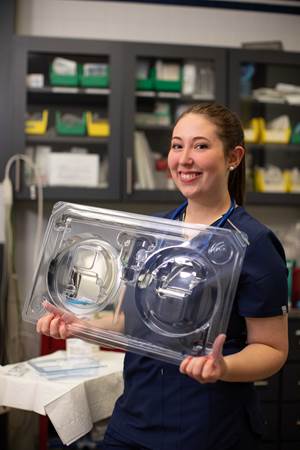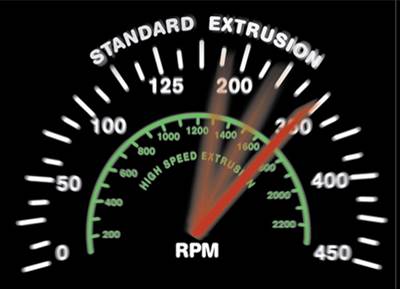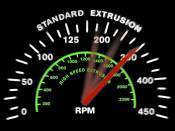Studies Boost Prospects For High-Speed Extrusion
Close up: Extrusion
Study shows that high-speed, single-screw extruder can significantly boost the processing capability of a small-diameter machine for a wide range of applications
A properly designed high-speed, single-screw extruder (HSSSE) can significantly boost the processing capability of a small-diameter machine for a wide range of applications. That was the conclusion of a study conducted by Davis-Standard LLC (D-S), Pawcatuck, Conn., and presented at the Society of Plastics Engineers ANTEC 2012 meeting last April by John Christiano, D-S’s v.p. of processing technology. D-S unveiled its first high-speed extruder at NPE2012, which was co-located with ANTEC in Orlando, Fla.
High-speed twin-screw extrusion systems have been the norm in compounding since the 1990s, when a handful of machine builders introduced super-fast, high-torque designs. In single-screw extrusion, however, high-speed technology is far more common in Europe than North America.
The D-S study investigated the extrusion characteristics of an HSSSE to determine whether it was suited to several different extrusion applications including sheet, fiber, and extrusion coating. This article reports on the results related to sheet extrusion, looking at how PP and HIPS grades performed at high speeds.
The extruder used for the study was a 2.5-in., 40:1 L/D extruder equipped with a 500-hp motor. Screw speeds up to 1200 rpm were evaluated.
The extruder was “highly instrumented,” Christiano’s paper remarks. Specifically, D-S’s Thermatic Temperature Control system was used to control the barrel temperatures and measure the heat flux in each zone of the extruder. Eight pressure transducers were located along the barrel at approximately 5 D increments to measure axial pressure generation along the screw. A pressure transducer and exposed-junction melt thermocouple were located in the discharge adapter of the extruder in order to evaluate the output and processing thermal stability of the melt.
A valved adapter and a 30-in.-wide coathanger die with a 0.050-in. die gap was utilized for all of the sheet trials. A 4 D static mixer was installed between the valved adapter and the die. A two-stage, moderate- to high-intensity screw design was used for processing sheet-grade PP and HIPS.
The data recorded at each operating condition included the extruder output, melt temperature, motor power consumption, and pressure at the discharge of the extruder. Pressure readings were recorded with a data-acquisition system at a rate of 50 Hz. The processing stability was evaluated for each material by monitoring pressure variation and melt temperature variation vs. time at the discharge of the extruder. The melt quality of the extrudate was inspected visually as it exited the die. The screw speeds examined ranged from 400 to 1200 rpm for each of the materials.
The suitability of the HSSSE for each application was judged by comparing its performance with a predefined set of parameters that are commonly used for each application, notably feeding consistency vs. screw speed or linearity of specific output (kg/hr-rpm) vs. screw speed; acceptable melt temperature range; and required process stability. Process stability was evaluated by monitoring pressure variation, as an indication of output consistency, and melt temperature variation in time, as an indication of thermal homogeneity. Melt quality was inspected visually for defects exiting the die.
In the PP sheet test, output rate increased linearly with screw speed. There was a slight increase in the specific output rate at 800 rpm; however, at 400 and 1200 rpm the value was constant. The relatively constant specific output throughout the processing range indicates that the solids conveying zone of the screw was operating efficiently. The variation in specific output of less than 1.8% over the desired processing range is well below the required feed-rate consistency criteria. Overall, throughputs reached up to 2200 lb/hr, approximately nine times greater than what would be expected from a conventionally designed extruder of the same size.
Melt temperature increased at higher screw speeds, but remained in an acceptable range. The melt temperature increased from 437 F at 400 rpm to a maximum of 477 F at 1200 rpm. The thermal process stability remained in the desired range at up to 800 rpm.
At 1200 rpm, the melt-temperature fluctuations increased to 36° F. The variations in pressure at the extruder exit were in the range of ±2% of target. Most sheet extrusion systems have extruders equipped with melt pumps to handle this level of pressure variation.
Visual inspection of the melt curtain at 400 and 800 rpm showed excellent melt quality. The visual melt quality of extrudate declined at 1200 rpm. A melt disturbance was observed in the sheet exiting the die. Overall, the performance of the HSSSE for processing a sheet grade of PP was acceptable at screw speeds up to 800 rpm.
Specific rate for the HIPS sheet extrusion material was lowest at 400 rpm and reached a maximum at 800 rpm. The peak specific output at 800 rpm was 10% above the average specific output, and the value at 400 rpm was 10% below the average. Melt temperature increased with increasing rpm. The upper limit of melt temperature was reached at 800 rpm. Melt temperature increased from 453 F at 400 rpm, to 477 F at 800 rpm. This exceeded the maximum temperature limit by 36° F.
The HIPS sheet grade was processed within the design parameters at up to 2425 lb/hr. D-S contends that higher output rates are possible with further screw-design optimization to improve melting and mixing.
The thermal process stability remained in the desired range. Melt-temperature fluctuations remained below 33° F over the entire processing range. This indicates good thermal homogeneity. The variation in pressure at the exit of the extruder remained in an acceptable range for all of the operating conditions.
Visual inspection of the melt curtain at the 400, 800, and 1200 rpm showed excellent melt quality. Overall, the performance of the HSSSE for processing sheet-grade HIPS was acceptable up to a screw speed of 800 rpm. The maximum melt temperature was exceeded above this screw speed. To ensure consistent output and reduce the thermal gradient in the melt stream exiting the extruder, a melt pump and static mixer are recommended.
A lower intensity screw design is required to control the melt temperature above 800 rpm. Further optimization of the barrel temperature in the solids conveying zone could help to reduce the variation in specific output at the different screw speeds, the study noted.
Related Content
Catheter Specialist Finds Sweet Spot Serving Small, Medium-Sized Concerns
Medical-component specialist LightningCath has carved a niche meeting the needs of small to medium-sized entrepreneurs with complex catheter designs … quickly.
Read MoreMedical Molder, Moldmaker Embraces Continuous Improvement
True to the adjective in its name, Dynamic Group has been characterized by constant change, activity and progress over its nearly five decades as a medical molder and moldmaker.
Read MoreCollaboration will bring Recycled Plastic to Medical Device Packaging
Agreement between Eastman and Ethicon will put copolyester derived from recycled materials in sterile barrier applications.
Read MoreSeaway Plastics Acquired
Private equity firm ICG purchased the injection molder and its three facilities located in Florida and California.
Read MoreRead Next
What’s the Deal With High-Speed Extruders?
If we are talking about extruder screw speed, how about 1800 rpm? That’s how fast some extruders are running today.
Read MoreHigh-Speed Extrusion: Are You Ready for the Fast Lane?
Around three dozen, mostly European, processors are pushing commercial development of high-speed single-screw extrusion. They have installed more than 100 of the small hyper-drive machines whose screws turn at up to 1500 rpm, about eight to 10 times faster than standard extruders. At least two German machine builders are working on machines that will go to 2000 rpm and even higher. The goal is to raise output without increasing extruder size.
Read MoreFor PLASTICS' CEO Seaholm, NPE to Shine Light on Sustainability Successes
With advocacy, communication and sustainability as three main pillars, Seaholm leads a trade association to NPE that ‘is more active today than we have ever been.’
Read More

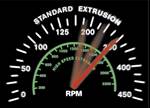
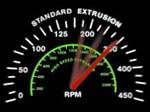





 (2).jpg;maxWidth=300;quality=90)














